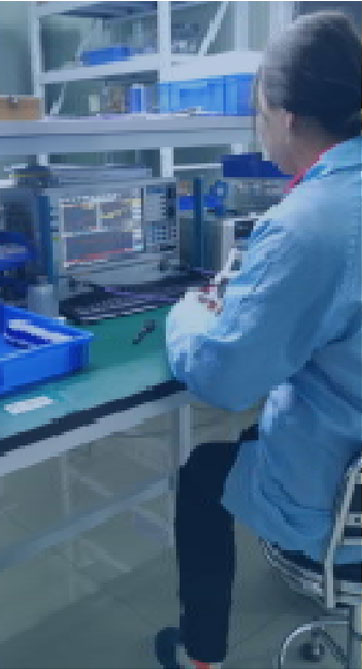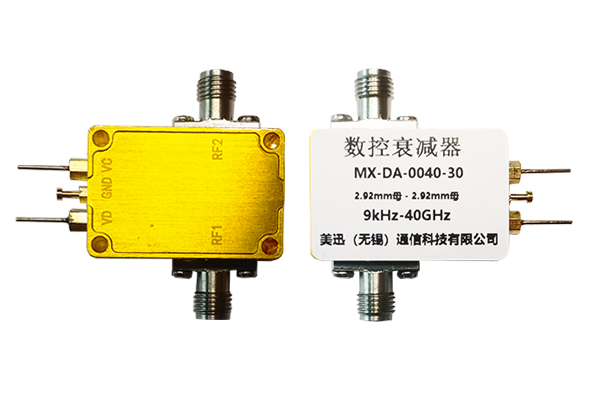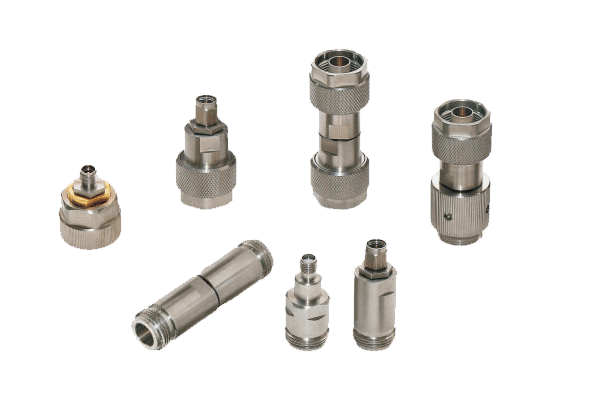
Pin diodes now serve as significant elements in high-bandwidth applications owing to their fundamental material and electrical qualities Their swift switching ability coupled with low parasitic capacitance and modest insertion loss makes them ideal for switch modulator and attenuation applications. The basic mechanism behind pin diode switching depends on regulating the device current via an applied bias voltage. The control voltage varies the depletion region dimensions at the junction and thereby alters conductive behavior. Varying the bias voltage facilitates reliable high-frequency switching of PIN diodes with small distortion penalties
PIN diodes are often used in elaborate circuit arrangements where strict timing and control are essential They are useful in RF filtering systems for choosing which frequency bands to pass or suppress. Also their capacity to manage high power signals makes them applicable to amplifiers power dividers and signal generators. The push for compact efficient PIN diodes has led to broader use in wireless communications and radar systems
Analyzing the Performance of Coaxial Switch Designs
Coaxial switch design is a sophisticated process involving many important design considerations The operation of a coaxial switch is affected by the selected switch topology frequency band and insertion loss behavior. Superior coaxial switch design seeks minimal insertion loss alongside strong isolation between ports
Examining performance entails assessing return loss insertion loss and isolation figures. Assessment employs simulation, analytical modeling and experimental measurement techniques. Accurate analysis is crucial to ensure reliable coaxial switch operation across systems
- Simulation packages analytic approaches and lab experiments are commonly applied to analyze coaxial switch designs
- The behavior of a coaxial switch can be heavily influenced by temperature impedance mismatch and manufacturing tolerances
- New advances trends and innovations in coaxial switch engineering aim to enhance performance metrics while cutting size and power consumption
LNA Design for Maximum Fidelity
Optimization of LNA gain efficiency and overall performance is critical to achieve excellent signal preservation That involves meticulous transistor choice biasing arrangements and topology selection. Good LNA design practices focus on lowering noise and achieving high amplification with minimal distortion. Design evaluation relies heavily on simulation and modeling tools to measure noise effects of various choices. Achieving a reduced Noise Figure demonstrates the amplifier’s effectiveness in preserving signal amid internal noise
- Device choice focusing on minimal intrinsic noise characteristics is paramount
- Adopting proper optimal biasing is essential to reduce noise creation in devices
- Topology of the circuit strongly affects total noise performance
Tactics like impedance matching noise mitigation and feedback regulation advance LNA performance
Signal Path Control Using Pin Diodes

PIN diode switching mechanisms deliver versatile and efficient RF path routing across designs The semiconducting switches operate at high speed to provide dynamic control over signal paths. Their minimal insertion loss and robust isolation characteristics prevent significant signal degradation. They find use in antenna selection systems duplexers and phased array antennas
Operation relies on changing the device resistance via applied control voltage to switch paths. When off the diode’s high resistance isolates and blocks the RF path. Forward biasing the diode drops its resistance allowing the RF signal to be conducted
- Further advantages include fast switching low power requirements and compact design of PIN diode switches
Multiple architectures designs and configurations of PIN diode switch networks can be constructed to deliver advanced routing functions. Arranging multiple switches in networked matrices enables flexible routing and dynamic configuration
Coaxial Microwave Switch Performance Evaluation

Testing and assessment of coaxial microwave switches are crucial to ensure efficient operation within systems. Various performance drivers like insertion reflection transmission loss isolation switching speed and bandwidth influence switch behavior. Complete assessment involves quantifying parameters over diverse operational and environmental test conditions
- Moreover additionally furthermore the evaluation ought to include reliability robustness durability and environmental tolerance considerations
- Finally the result of robust evaluation gives key valuable essential data for choosing designing and optimizing switches to meet specific requirements
In-depth Review of Noise Suppression in LNA Circuits
Low noise amplifier circuits are central to RF systems for enhancing weak signals and limiting internal noise. This review presents a thorough examination analysis and overview of noise mitigation strategies for LNAs. We explore investigate and discuss principal noise contributors like thermal shot and flicker noise. We also examine noise matching feedback circuitry and optimal biasing strategies to mitigate noise contributions. It presents recent developments like new semiconductor materials and fresh circuit architectures that lower noise figure. With a complete overview of noise minimization principles and methods the review supports the design of high performance RF systems by researchers and engineers
High Speed Switching Applications for PIN Diodes

They possess unique remarkable and exceptional qualities beneficial for high speed switching Small capacitance together with low resistance enables rapid switching to satisfy precise timing needs. PIN diodes’ adaptive linear voltage response permits precise amplitude modulation and switching. Such versatility flexibility and adaptability renders them appropriate suitable and applicable for diverse high speed scenarios They are applied in optical communications microwave systems and signal processing equipment and devices
Integrated Coaxial Switch and Circuit Switching Solutions
Coaxial switch IC integration provides critical improvements in signal routing processing and handling inside electronic systems circuits and devices. These specialized integrated circuits enable control management and routing of coaxial signals with high frequency performance and low latency insertion times. IC miniaturization supports compact efficient reliable and robust designs appropriate for dense interfacing integration and connectivity contexts
- With careful meticulous and rigorous deployment of these approaches developers can accomplish LNAs with outstanding noise performance enabling trustworthy sensitive electronics By meticulously carefully and rigorously adopting these practices designers can deliver LNAs with excellent noise performance supporting reliable sensitive systems With careful meticulous and rigorous deployment of these low-noise amplifier approaches developers can accomplish LNAs with outstanding noise performance enabling trustworthy sensitive electronics By rigorously meticulously and carefully implementing these techniques practitioners can achieve LNAs with remarkable noise performance for sensitive reliable electronics
- Applications range across telecommunications data communications and wireless networking
- Aerospace defense and industrial automation benefit from integrated coaxial switch solutions
- These technologies appear in consumer electronics A V gear and test and measurement setups
Design Tips for Low Noise Amplifiers in mmWave Bands

At mmWave frequencies LNAs must contend with greater signal attenuation and intensified influence from noise sources. Parasitic elements such as capacitance and inductance dominate performance at mmWave so layout and component selection are critical. Reducing input mismatch and boosting power gain are critical essential and important for LNA functionality at mmWave. Selecting active devices like HEMTs GaAs MESFETs and InP HBTs greatly affects achievable noise figures at these frequencies. Moreover additionally moreover the design implementation and optimization of matching networks is vital to ensure efficient power transfer and impedance match. Package-level parasitics should be considered because they may impair LNA function at mmWave. Adopting low loss transmission media and careful ground plane strategies is essential necessary and important to cut reflections and retain bandwidth
PIN Diode RF Characterization and Modeling Techniques
PIN diodes are vital components elements and parts used throughout numerous RF switching applications. Precise accurate and comprehensive characterization of these devices is essential to support design development and optimization of reliable high performance circuits. Included are analyses evaluations and examinations of electrical voltage and current characteristics such as resistance impedance and conductance. Additionally frequency response bandwidth tuning properties and switching speed latency or response time are assessed
Moreover additionally furthermore creating accurate models simulations and representations for PIN diodes is crucial essential and vital to forecast behavior in RF systems. Various modeling approaches such as lumped element distributed element and SPICE models are used. Appropriate model choice depends on specific application needs and the required desired expected accuracy levels
Advanced Cutting Edge Sophisticated Techniques for Low Noise Quiet Minimal Noise Amplifier Design
Engineering LNAs demands careful topology and component decisions to achieve superior noise performance. Recent semiconductor breakthroughs and emerging technologies enable innovative groundbreaking sophisticated noise reduction design techniques.
Examples of techniques are implementing employing and utilizing wideband matching networks choosing low noise transistors with strong intrinsic gain and optimizing biasing schemes strategies and approaches. Additionally advanced packaging and thermal management practices are critical for minimizing external noise influences. Through careful meticulous and rigorous application of such methods engineers can design LNAs with top tier noise performance enabling dependable sensitive systems
